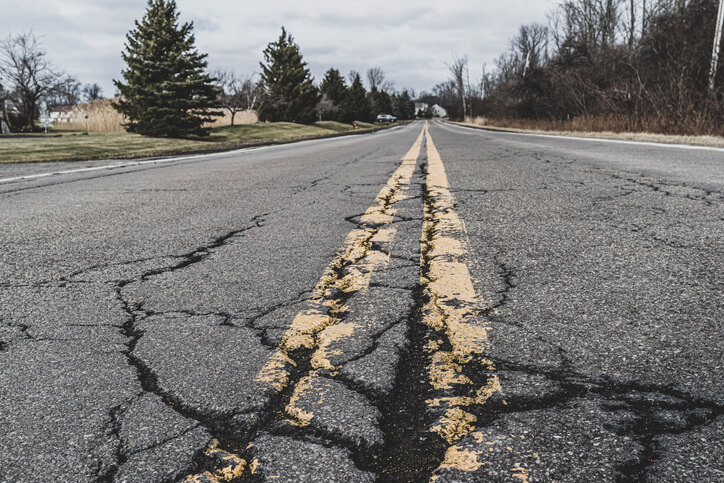
What’s Damaging My Asphalt? Here Are 6 Possible Causes
Oct 22nd, 2020
Asphalt is the ideal paving solution for roadways, driveways, and garages. It’s known for its longevity and is a tried-and-tested paving material. However, over time, asphalt will eventually show signs of wear and tear.
On average, asphalt surfaces have a lifespan of 15–30 years if properly maintained and repaired by paving contractors.
Wondering what you can do to keep your asphalt in the best condition? Here are six possible causes of damaged asphalt and what you can do to remediate their effects.
If you need asphalt repair services, contact Pavemax to get a free estimate.
Sunlight/UV Radiation
In Florida, sunlight is one of the biggest enemies of asphalt. Just like ultraviolet (UV) rays hit our skin, sunlight beats down on the asphalt. Over time, sunlight penetrates and weakens the asphalt. The best way to prevent sun damage to asphalt? Sealcoating. We put sunscreen on our skin to prevent sun damage; sealcoating does the same thing for asphalt by protecting it and extending its lifespan.
Standing Water
Standing water looks innocent enough on top of asphalt, but it can slowly seep through it and cause issues such as softening, displacement, and cracking. Always brush off puddles whenever you see them to keep the asphalt stronger for longer. If the asphalt continuously puddles in an area, contact an asphalt contractor to evaluate the possibility of permanent repairs to achieve better drainage or learn more about the effects of water on asphalt.
Trees & Roots
Large trees spread their roots quite far underground, with some spreading up to 3 times the canopy radius. So, if you have a large tree within your asphalt’s vicinity, roots are likely growing under. This growth can disrupt the base, and as these roots shift to find nutrients, they can cause cracks and bumps. To avoid this, contact a professional at Pavemax; we have experience paving around large trees.
Heavy-Duty Trucks & Vehicles
Pavement fatigue is a term to describe progressive damages to asphalt from constant exposure to heavy loads and traffic. Heavy trucks can increase rutting and pavement deterioration along wheel paths. This can substantially decrease the durability and lifespan of certain areas in an asphalt roadway or parking lot. Damage is more prevalent in areas where heavy vehicles are driving slowly, stop or slow down, and where heavy vehicles might be parked.
Chemical Stains
Sometimes fuel and oil can leak from cars and other vehicles that drive on asphalt. Sealcoating applications do not stick to vehicle fluid on an asphalt surface, so you lose a layer of protection. In addition, over time, the fuel and oil begin to penetrate the surface and can break up the aggregates of the asphalt. Eventually, the surface might start to crumble, and you may see some depressions begin to form. If not repaired, the surface will further deteriorate and interrupt the life cycle of asphalt.
Groundwater
Water running underneath asphalt is an even greater enemy than standing water. Groundwater can displace asphalt and its base, leaving pits, cracks, collapsing asphalt, and potholing. If you’ve tried everything and can’t figure out why your asphalt is continuously cracking or pitting, contact a professional at Pavemax to search for a groundwater issue. If you can identify the issue, you can readjust drainage or stop the source.
